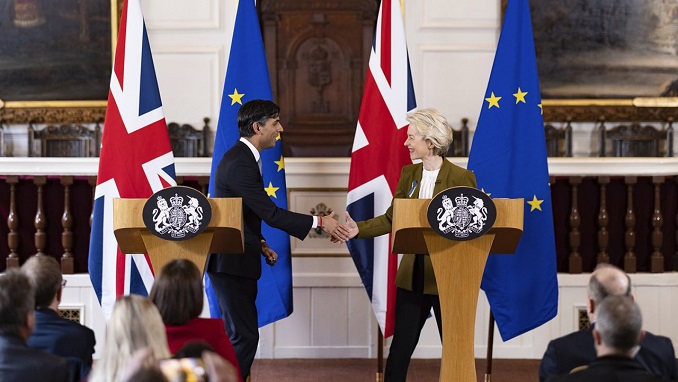
Brexit is back in the news. The United Kingdom and the European Union have signed a new agreement intended to solve one of the thorniest challenges created by Brexit: a long-term resolution for the trading status of Northern Ireland.
It comes more than six years after British voters chose to leave the EU and three years since the two finally broke up in 2020.
Since the UK broke up with the EU in 2020, there have been some big loose ends.
A lot of it has to do with trade between the UK, Ireland, and Northern Ireland. Ireland is part of the EU, but Northern Ireland is part of the UK.
The Northern Ireland Protocol was signed between former PM Boris Johnson and the EU. It required that goods from Britain go through customs checks at Northern Ireland ports.
Many politicians in the UK territory said the rule undermined their relationship with the rest of Great Britain.
The tensions caused a rift within the Northern Ireland government, which has been boycotting the checks. There were massive concerns about a trade war.
After months of negotiations, UK PM Rishi Sunak and European Commission President Ursula von der Leyen announced they’ve reached an agreement.
The Windsor Framework has three main parts to it. Goods moving from Britain to Northern Ireland would go through a “green” channel that won’t include routine checks.
Meanwhile, goods that are passing through to get to Ireland and the EU would take the “red” channel, which will have normal checks.
There’s also the “Stormont brake” that gives Northern Ireland’s assembly a say over any future EU trade rules.
Trade experts say the new deal ends the threat of a UK-EU trade war and enhances goodwill between the two sides, which will deliver a boost to business confidence.
The deal means a “stronger EU-UK relationship, standing as close partners, shoulder-to-shoulder, now and in the future,” Von der Leyen said Monday.

Be the first to comment